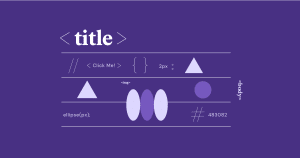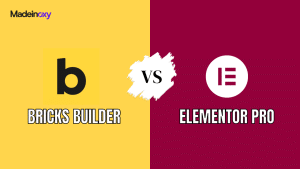Elementor vs. Traditional Web Design: A Comprehensive Comparison
Over the course of the last ten years, there has been a substantial shift in the environment of web design. Traditional web design, which was formerly the method of choice for developing websites, is now being challenged by contemporary tools such as Elementor, which is a powerful page builder that incorporates drag-and-drop functionality. With the aid of this comparison between Elementor and traditional web design, you will be able to gain a better understanding of the benefits and drawbacks of both approaches, which will enable you to select the appropriate strategy for your upcoming project.
What is Elementor?
Elementor is a well-known page builder for WordPress that enables users to create individualized layouts and designs without the need to know how to code. Since its release in 2016, Elementor has amassed an enormous amount of popularity as a result of its user-friendliness, adaptability, and extensive feature set.
Key Features of Elementor
Builder with Drag-and-Drop Capabilities: Elementor gives users the ability to graphically construct web pages by allowing them to drag and drop items such as text, photos, buttons, and widgets.
Templates that have already been designed: It provides a wide variety of templates that have been designed by professionals and may be modified to fit the requirements of any sector or specialty.
Your website will appear fantastic on desktop computers, tablets, and mobile devices thanks to Elementor’s responsive design, which ensures that your website will look excellent on all of these devices.
Elementor’s Live Preview feature allows you to view the changes that are being made to your design in real time as you make edits.
Extensibility: Elementor is highly adaptable because to its compatibility with a wide variety of third-party plugins and its flexibility for custom code.
What is Traditional Web Design?
Through the use of languages such as HTML, CSS, and JavaScript, the standard technique of developing websites is referred to as traditional web design. This method involves the manual coding of websites. In most cases, this strategy necessitates the participation of a web developer or designer who is proficient in both front-end and back-end development.

Key Aspects of Traditional Web Design
Custom Coding: Websites are constructed from the ground up, with HTML, CSS, and JavaScript being hand-coded in order to create a design that is unique to the client and is tailored to their specific requirements.
Traditional web design does not rely on pre-designed templates because it does not follow the template-based approach. Each and every component of the website is developed individually.
Developers have complete control over every aspect of the website, including its design and functionality. This gives them the ability to construct websites that are both highly unique and sophisticated.
Traditional design gives for more scalability and flexibility, particularly when it comes to incorporating new features or working with large databases. Scalability and flexibility are two of the most important aspects of traditional design.
Comparison: Elementor vs. Traditional Web Design
On the basis of a number of important aspects, let’s examine the primary distinctions that exist between Elementor and conventional web design for websites.
1. Ease of Use
The simplicity of usage is one of the most notable distinctions that can be made between Elementor and more conventional approaches to web creation.
In the world of web design, Elementor is well-known for its intuitive user interface. It is possible for people with no prior training in coding to construct professional websites by just dragging and dropping pieces. Because of its user-friendly interface and pre-designed templates, it is suitable for both novice and professional designers alike.
Traditional Web Design: Traditional web design calls for a higher level of technical expertise than other types of web design. Developers are required to write and comprehend code, which can be a challenging learning curve for those who are just starting out. It is possible that even experienced developers would find the process of building a website from scratch to be time-consuming.
2. Speed of Development
When it comes to web development, time is an essential component, and the approach that you select can have a considerable impact on the speed at which a website is constructed.
Users are able to construct webpages with Elementor at a rate that is significantly faster than that of traditional approaches. The process of design is sped up by its drag-and-drop interface, which, when paired with templates and widgets, is extremely efficient. Because it is possible to produce even intricate layouts in a matter of hours, it is an ideal option for individuals that require a significant turnaround time.

Web design that is considered to be traditional is typically more time-consuming than other types of web design because developers are required to manually code every part of the website. The development process is slowed down as a result of this practice, despite the fact that it enables greater customization. Completing a website that is made to order can take several weeks or even months.
3. Customization and Flexibility
There is no doubt that customization is an essential component for companies that want particular functions or distinctive design components.
There are several restrictions with Elementor, despite the fact that it offers a considerable lot of customisation with its widgets and themes. The use of Elementor alone might not be sufficient to accomplish the development of bespoke functionality that calls for intricate code. But developers have the ability to enhance its functionality by using custom CSS or plugins from third-party developers.
Web Design in the Traditional Tradition: Traditional web design provides an unprecedented level of customisation and freedom. Developers are able to construct designs that are completely unique and include features that are specific to their needs without any limitations because everything is designed from start. This is especially helpful for companies that require extensive design work or advanced functionality in their products or services.
4. Cost
It is possible for the cost of web design to vary greatly depending on the approach that is taken.
Elementor: Elementor is more cost-effective for individuals and small enterprises than other platform options. Even while there is a free version, the premium version, which is called Elementor Pro, provides more advanced capabilities at a price that is not too expensive. In addition, the ease of use decreases the requirement for employing expert developers, which might result in cost savings throughout the course of the development process.
Web Design in the Traditional Method: Traditional web design might be more expensive than other methods because it frequently necessitates the hire of expert developers. There is an increase in the amount of effort involved in custom-coded websites, and also, continuous maintenance and updates can add to the overall cost. It is possible, however, that this investment will be worthwhile for companies who want a website that is extremely customizable.
5. SEO and Performance
In order to determine the success of your website, search engine optimization (SEO) and website performance are key elements.
Elementor: Websites built using Elementor are typically optimized for search engine optimization (SEO), and the platform provides features such as templates that load quickly and design that is responsive. On the other hand, a website’s performance and search engine optimization might be significantly impacted by poorly optimized templates or an excessive number of plugins from third-party developers.
Traditional Web Design: When using traditional web design, developers have complete control over the code of the website, which enables them to optimize and operate the website more effectively. The usage of custom coding can lead to speedier load speeds, which is advantageous for both the user experience and search engine optimization. On the other hand, it calls for more work to guarantee that all components are tuned appropriately.
6. Maintenance and Updates
To ensure that your website remains both secure and useful, it is essential that you regularly maintain and update it.
Without having to touch the coding, Elementor makes it simple to manage the website, change the content, and add new features. Elementor also makes it possible to manage the website. However, if the plugins are not handled appropriately, depending on third-party plugins can result in the introduction of security risks.
Conventional Web Design: Conventional websites need to undergo routine maintenance in order to ensure that their codebase is always up to date. When this occurs, it is common practice to employ developers to apply upgrades, address issues, and guarantee that the website continues to be secure. The integrity of the website can be controlled more precisely with this method, despite the fact that it may require more effort.
Conclusion
Conventional web design and Elementor each have their own set of benefits and drawbacks; the one that is best for you will be determined by the particular requirements and resources that you have available. Elementor is a wonderful choice to consider if you are looking for a solution that is not only rapid but also user-friendly, cost-effective, and efficient. It makes the design process easier to understand, making it accessible to those who are not computer programmers, while still providing a high degree of customisation.






